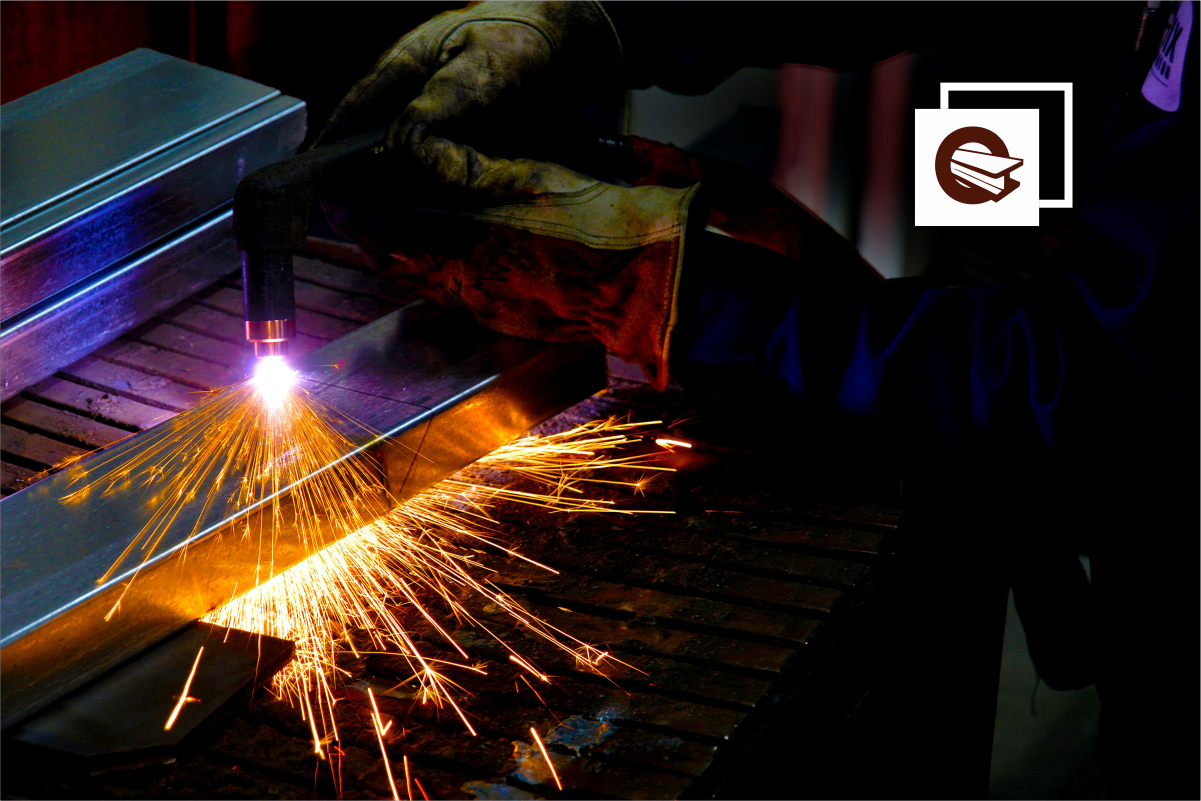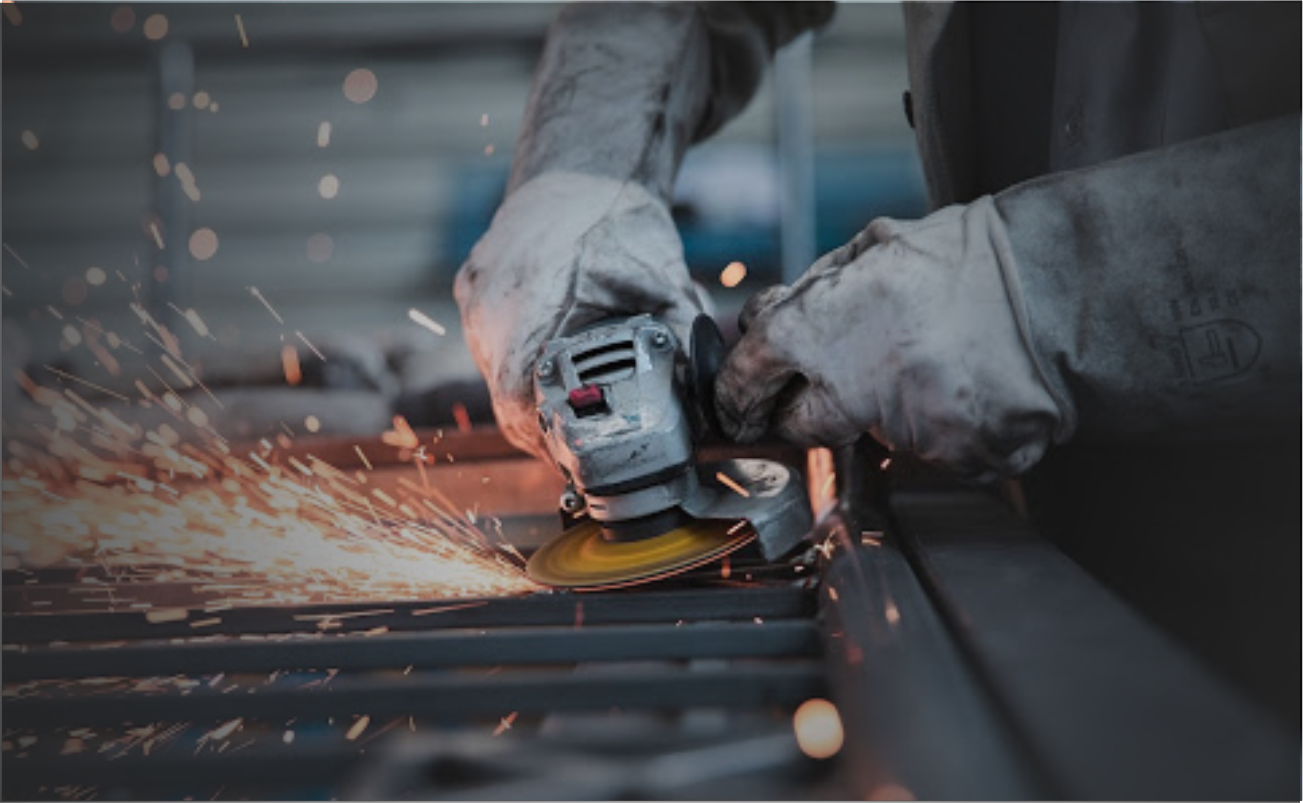
Metal fabrication is a technique that shapes metal into parts or finished products. We form sheet metal into a part or item using a variety of processes.
The majority of metal fabrication is done with sheet metal, which may be up to.25 inches thick. Fabricators turn this sheet metal into finished goods or tools. To make the completed product, we cut, stamp, fold, or shape metal.
Some examples of metal fabrication goods include:
- Tools for the hands.
- Screws, nuts, and bolts
- Cans.
- Cutlery.
- Pipes and their fittings
- Windows and doors made of metal.
- Attachments for equipment
- Car components
Metal fabrication is important in the production of items for mass consumption. This category includes the mass manufacture of objects such as screws, cans, cutlery, pipes, and pans. These items often have more consistent needs and a greater tolerance for mistake. This means that the pieces may alter somewhat from the original design while still functioning normally.
Metal fabrication, on the other hand, may produce massive batches of specialized manufactured metal goods. These projects often include the design and production of bespoke metal components to meet the demands of a business. Customized valves, automotive parts, and hardware are all examples of this sort of undertaking.

Metal Fabrication Types
The majority of metal manufacturing falls into three broad categories:
- Commercial.
- Industrial.
- Structural.
Commercial fabrication is work done when producing commercial items. This category includes things intended for consumer usage. Appliances and automobiles are both common consumer items that are fabricated commercially.
In contrast, industrial fabrication develops elements that are utilized in other equipment. This machinery, in turn, produces consumer items. Most industrial fabrication goods are used by manufacturers. Band-saws and iron-working machines, for example, are both products of industrial fabrication.
Metalworking done as part of the building process is referred to as structural fabrication. Metal components utilized by stores, factories, buildings, and skyscrapers are typically created via large-scale fabrication initiatives.
Each of these groups employs a wide range of procedures. Metal fabrication can rely on simply one of these processes or a mixture of them.
Many metal fabrication tasks need several phases. Even very simple items, such as a saucepan or skillet, need a range of approaches. Metal fabrication entails more than just shaping metal.

The Metal Fabrication Method
Although most metal fabrication focuses on shaping and cutting metal, a good fabricated object involves several phases. The procedure begins with a design or rendering and concludes with a final, working part.
Designing a metal fabrication project: Design is the initial stage in every project. Some companies come to us with a finished design. More often than not, businesses come to us with a prototype. Before beginning a significant run, we collaborate with them to improve and test the design.
During the production process, many metal fabricators now employ Computer Aided Design (CAD) or Computer Aided Manufacturing (CAM). We may create a 3-D prototype of an object using CAD and CAM software before beginning the real fabrication.
Because a project might have multiple components, this step ensures that the product will perform properly. We’ll establish the size and form of each needed item based on the prototype or rendering.
During the design phase, we’ll also discuss the metals that will be utilized and the finishing procedure that will be required.
Fabricating the part: The second phase in a metal fabrication project is the actual constructing process. During this step, we will cut and shape all of the design phase components. Metalworking tools can include shears, mills, lathes, and nibblers.
We frequently employ CNC equipment, or Computerized Numerical Controls, to guarantee that each item is cut according to the design requirements. These tools build a computer program that contains the exact commands and requirements necessary to create a piece. After that, the software is loaded into the CNC machine.

Part finishing and assembly: The final phase in metal fabrication is to finish and assemble the components into the finished product. These steps fortify the product and assure its readiness for usage.
Grinding and deburring are finishing processes that guarantee materials work well and have no extra material. Metals can also be heat treated to make them stronger, or they can be plated with zinc or another finish.
Source: SUMMIT STEEL & MANUFACTURING INC BLOG

I was very happy to uncover this page. I need to to thank you for ones time just for this fantastic read!! I definitely liked every little bit of it and I have you book-marked to see new information in your site.
Thanks for your blog, nice to read. Do not stop.